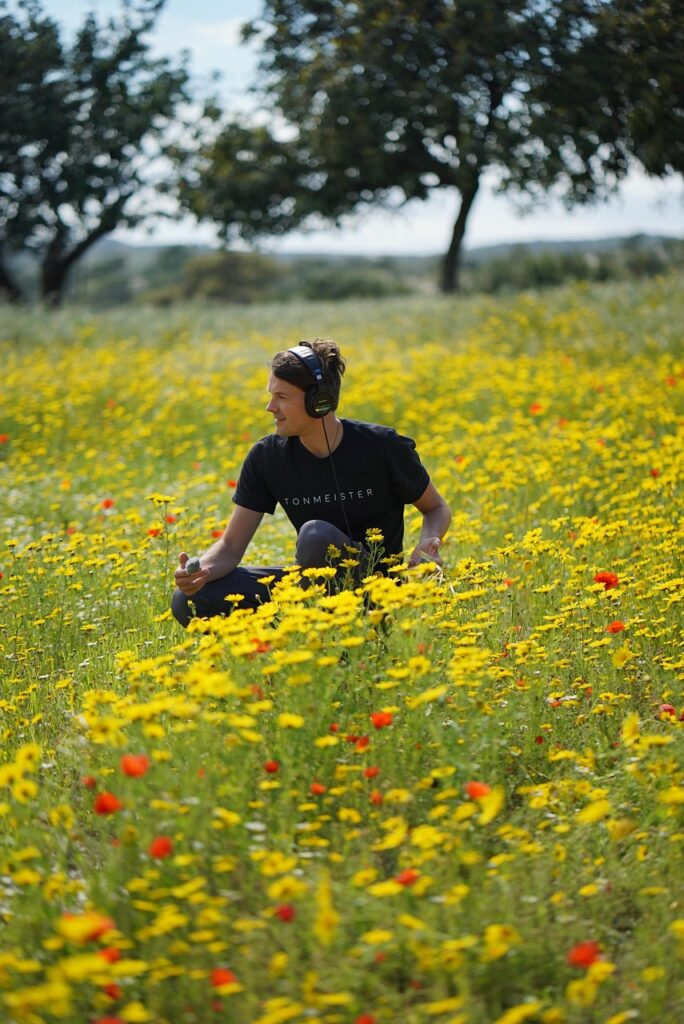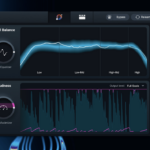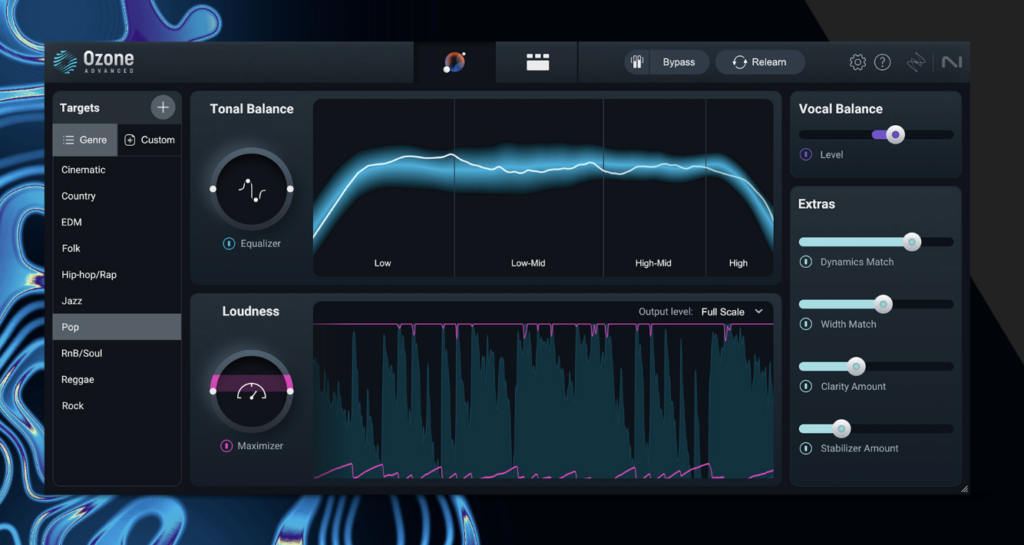Introduction
Have you ever closed your eyes while listening to a meditation track and felt transported to a peaceful forest or serene beach? That magic comes from skillful field recording! In 2025, creating professional-quality nature soundscapes has become more accessible than ever. A recent study by the Global Wellness Institute found that nature sound meditation increased relaxation responses by 37% compared to silence alone. Whether you’re a meditation teacher, sound therapist, or enthusiast looking to create your own relaxing audio experiences, this guide will walk you through everything you need to know about capturing those perfect natural moments that soothe the soul and calm the mind.
The growing popularity of meditation apps and sound therapy has created a huge demand for high-quality nature recordings. What once required expensive studio equipment can now be achieved with relatively affordable gear and the right techniques. I’ve been field recording for over a decade, and I’m excited to share what I’ve learned about capturing the subtle beauty of natural environments!
Essential Equipment for Field Recording Nature Sounds
The foundation of excellent field recording for meditation music starts with selecting the right equipment. Your gear choices will significantly impact the quality and character of your nature sound recordings.
Portable Recorders
A good portable recorder is the heart of your field recording setup. In 2025, several excellent options balance quality and budget:
- Zoom H6 (link to product): This versatile recorder remains a favorite among field recordists for its excellent preamps, multiple input options, and reasonable price point. The interchangeable microphone capsules make it adaptable to different recording situations.
- Sony PCM-A10 (link to product): A pocket-sized recorder that delivers surprisingly good results for its size, perfect for beginners or spontaneous recording opportunities.
Microphones for Nature Recording
Your microphone selection is crucial for capturing the nuances of natural environments:
- Condenser Microphones: These sensitive microphones excel at capturing detailed soundscapes. The Sennheiser MKH 8040 (link to product) offers outstanding transparency for nature recording.
- Binaural Microphones: For immersive, 3D-like recordings designed for headphone listening, consider the 3Dio Free Space Pro II (link to product). Binaural recordings create a realistic spatial audio experience that’s ideal for meditation.
- Hydrophones: To record underwater sounds like bubbling streams or ocean waves beneath the surface, the Aquarian Audio H2a-XLR (link to product) delivers excellent results.
Essential Accessories
Don’t overlook these critical accessories:
- Windshields and Dead Cats: Wind is the enemy of clean nature recordings. A Rycote Windshield Kit (link to product) will protect your microphones from wind noise.
- Shock Mounts: These isolate your microphone from handling noise and vibrations, essential when recording in the field.
- High-Capacity SD Cards: Nature recording generates large files. Invest in reliable, high-speed SD cards with at least 128GB capacity.
- Portable Power Solutions: Extended recording sessions require extra battery power. Consider the Goal Zero Venture 30 (link to product) for reliable backup power.
- Quality Headphones: Closed-back monitoring headphones like the Sony MDR-7506 (link to product) allow you to hear exactly what you’re capturing in the field.
Your equipment needs will vary based on your specific goals and budget, but investing in the highest quality recording chain you can afford will pay dividends in the final meditation soundscapes you create.
Finding the Perfect Recording Locations
The location you choose for field recording can make or break your meditation soundscapes. Here’s how to find and evaluate potential recording spots:
Minimizing Human-Made Noise
The modern world is filled with human-made noise that can ruin otherwise perfect nature recordings:
- Use sound mapping apps like SoundPrint to identify quieter areas
- Visit potential locations at different times to assess noise levels
- Look for natural barriers like hills or dense forests that can block distant traffic noise
- Consider remote locations at least 3-5 miles from major roads
- Research noise pollution maps online before traveling to unfamiliar areas
Optimal Recording Times
Timing is everything when recording natural environments:
- Dawn Chorus: The hour around sunrise offers the richest bird songs and minimal human activity
- Evening Transitions: The period just after sunset provides unique transitional sounds as diurnal creatures settle and nocturnal ones emerge
- Night Recording: Deep night (midnight to 3 AM) can yield pristine recordings with minimal anthropogenic noise
- Seasonal Considerations: Spring mornings for birds, summer nights for insects, autumn for rustling leaves, winter for pristine silence and subtle wind patterns
Weather Impacts on Sound
Weather conditions dramatically affect both the sounds available and recording quality:
- Light rain creates beautiful ambient textures on leaves and water surfaces
- Post-rain recordings offer enhanced clarity due to higher humidity
- Avoid recording in high winds unless capturing specific wind effects
- Foggy conditions often provide excellent sound propagation with reduced background noise
- Snow creates a natural sound dampening effect, perfect for isolated elements
Legal and Safety Considerations
Always approach field recording responsibly:
- Obtain permits for recording in national parks and protected areas
- Respect private property boundaries and seek permission when needed
- Inform local authorities when recording in remote areas for safety
- Bring navigation tools, first aid supplies, and communication devices
- Consider weather forecasts and potential natural hazards before remote sessions
The perfect recording location combines minimal human interference, rich natural sounds, and safe, legal access. Don’t rush this process—scout thoroughly before committing to a full recording session.
Technical Recording Techniques for Meditation Audio
Once you’ve found the ideal location with your equipment ready, it’s time to focus on capturing techniques that will elevate your meditation recordings.
Microphone Placement for Immersive Soundscapes
The positioning of your microphones dramatically affects the spatial quality of your recordings:
- For stereo ambient recordings, use the ORTF technique (two cardioid microphones angled 110° apart, 17cm between capsules) to create natural stereo imaging
- Position microphones at ear height (about 5’6″) to capture human-perspective soundscapes
- For ground-dwelling creatures or subtle textures, consider lower placements about 12-18″ from the ground
- When recording water elements, position microphones safely above splashing range but close enough to capture detail
- Experiment with microphone spacing—wider distances create more dramatic stereo effects
Optimal Recording Levels and Formats
Technical settings significantly impact the usability of your recordings:
- Record at 24-bit/96kHz for maximum detail and processing flexibility
- Set input levels conservatively (-12dB average, peaks around -6dB) to avoid clipping unexpected sounds
- Use WAV format rather than compressed options like MP3
- Consider recording in mid-side (MS) format for adjustable stereo width during post-processing
- Set a pre-roll buffer (if your recorder offers it) to capture 5-10 seconds before pressing record
Monitoring Techniques During Recording
Active monitoring ensures you’re capturing what you intend:
- Use closed-back headphones with good isolation to hear exactly what the microphones are picking up
- Move slowly and remain still during recording to avoid handling noise
- Listen for distant mechanical sounds that might gradually become more prominent
- Set timers for unattended recording to capture natural environments without your presence
- Take detailed notes about each recording, including time, location, and environmental conditions
Specialized Sound Element Techniques
Different natural elements require specific approaches:
- Water Sounds: For flowing water, record multiple perspectives (above, beside, downstream, upstream) for layering options later
- Wind in Vegetation: Use a mid-side configuration to adjust the stereo width of wind sounds in post-production
- Bird Songs: Early morning recordings with directional microphones pointed toward active areas
- Rainfall: Place microphones under natural cover to capture the sound without water damage
- Thunder: Use a low-cut filter to manage wind and set recording levels with sufficient headroom for unpredictable peaks
Mastering these technical aspects takes practice, but even beginners can achieve remarkable results by following these guidelines and learning from each recording session.
Post-Processing Nature Recordings for Meditation
Recording is only half the journey—thoughtful post-processing transforms raw field recordings into effective meditation soundscapes.
Essential Audio Cleanup
Begin with careful cleaning of your recordings:
- Remove unwanted sounds (distant planes, human voices, equipment noise) with spectral editing tools in iZotope RX (link to product)
- Apply gentle noise reduction to minimize hiss without affecting natural ambience
- Use high-pass filters (around 40Hz) to remove rumble and low-frequency noise
- Trim and fade the beginnings and endings of your recordings for seamless looping
- Maintain a light touch—overprocessing can make nature sounds feel artificial
Layering Techniques for Depth
Creating immersive soundscapes often involves thoughtful layering:
- Combine foreground elements (distinct bird calls, water features) with background ambience (distant forest sounds, subtle wind)
- Balance different recording perspectives of the same environment
- Create depth by adjusting volume and EQ of different layers
- Consider introducing subtle day-to-night transitions for longer meditation tracks
- Maintain natural sound relationships—avoid unnaturally loud insects or distant elements
Appropriate Use of Effects
Effects should enhance natural qualities rather than transform them:
- Apply gentle EQ to enhance pleasing frequencies (often in the 2-8kHz range for sparkle)
- Use minimal reverb only when needed to add spaciousness
- Consider subtle stereo widening for headphone meditation experiences
- Apply light compression (2:1 ratio, slow attack) to manage dynamic range for meditation use
- Automate volume to create gentle breathing qualities in longer pieces
Software Recommendations
These digital tools help shape your recordings:
- DAWs: Reaper (link to product) offers excellent value, while Pro Tools (link to product) remains an industry standard
- Spectral Editors: iZotope RX (link to product) is unmatched for detailed audio cleanup
- Specialized Tools: GRM Tools (link to product) offers creative sound design possibilities
- Binaural Processing: Encoder plugins like Waves NX (link to product) can enhance spatial qualities
- Restoration Software: Cedar Studio (link to product) provides professional-grade restoration tools
The goal of post-processing for meditation recordings is to reveal the natural beauty already present while creating a consistent, immersive experience that supports deep relaxation.
Creating Cohesive Meditation Soundscapes
With cleaned and enhanced recordings ready, the final creative process begins—crafting complete meditation experiences.
Arrangement Principles for Meditation Music
Structure your soundscapes to support the meditation journey:
- Begin with grounding, recognizable elements that establish the environment
- Gradually introduce subtle variations to maintain interest without creating distraction
- Consider the psychological flow—starting with activity and gradually moving toward tranquility
- Create natural transition points for different phases of guided meditation
- Design 5-10 minute introductory segments that can be extended for longer sessions
Blending Natural Sounds with Musical Elements
When combining nature with music:
- Use instruments with organic timbres (wooden flutes, singing bowls, stringed instruments)
- Keep musical elements minimal and supportive rather than dominant
- Match musical keys and rhythms to the natural cadences present in your recordings
- Consider the emotional qualities different environments evoke (ocean waves for release, forests for grounding)
- Layer subtle drone tones that complement the fundamental frequencies of your nature recordings
Building Emotional Journeys
Effective meditation soundscapes often follow emotional arcs:
- Map the emotional journey from alertness to deep relaxation
- Create subtle tension and release patterns that mirror natural breath cycles
- Consider how different natural elements (thunder, gentle rain, birdsong) trigger different emotional responses
- Build toward moments of “sonic spaciousness” that support expanded awareness
- Return to grounding elements for closure and integration
Length and Format Considerations
Different meditation practices require different audio formats:
- Create modular segments that can be combined for various lengths (10, 20, 30, 45 minutes)
- Develop loopable sections with imperceptible transition points
- Consider offering versions with and without gentle time markers
- Format longer pieces with natural chapter points for different meditation phases
- Provide fade-out versions for sleep support and open-ended meditation
Frequency Enhancement
Some practitioners incorporate specific frequency work:
- Consider subtle binaural beats (delta range: 0.5-4Hz) for deep meditation states
- Explore gentle incorporation of 432Hz or 528Hz tuning for instruments
- Use sympathetic resonance techniques to enhance specific frequencies already present in nature
- Apply minimal sidechain techniques to create subtle “breathing” effects
- Ensure all frequency work remains subtle and supportive rather than dominant
The art of creating meditation soundscapes lies in supporting the practitioner’s journey while remaining largely unnoticed—the sounds should facilitate the experience without becoming the focus.
Distribution and Sharing Your Meditation Recordings
Once you’ve created your meditation soundscapes, consider how to share them effectively.
Platform Recommendations
Various platforms serve different needs:
- Insight Timer (link to platform): The largest meditation community with opportunities for free and premium content
- Spotify and Apple Music: Wide reach but challenging monetization for ambient content
- Bandcamp (link to platform): Artist-friendly platform with flexible pricing options
- Sounds from the Wild (link to platform): Specialized platform for nature recordings
- Your Own Website: Direct relationship with listeners and maximum control
Licensing Considerations
Protect your work appropriately:
- Register significant works with copyright authorities
- Consider offering different license tiers for personal, therapeutic, and commercial use
- Explore sync licensing opportunities for film and media production
- Clearly communicate usage terms with each release
- Consider Creative Commons licensing for broader sharing while maintaining attribution
Building an Audience
Connect with people who will value your recordings:
- Collaborate with meditation teachers and yoga studios
- Share your recording process and locations to build storytelling around your work
- Create specialized collections for different practices (sleep, focus, anxiety relief)
- Offer behind-the-scenes content about your recording adventures
- Connect with wellness influencers and meditation communities
Your field recordings can provide tremendous value to those seeking relaxation and mindfulness. By thoughtfully sharing your work, you extend the healing power of nature sounds to those who may not have direct access to these environments.
How to make money with Meditation Music?
There are lots of ways to monetize and earn money on your meditation music. However, it might be overwelming to get started. Thats why I’ve created a article that takes you though how to earn money form your meditation music!
Conclusion
Creating professional field recordings for meditation music is both an art and a science. With the right equipment, techniques, and practice, you can capture the healing sounds of nature and transform them into powerful tools for relaxation and mindfulness. The growing field of sound therapy and the increasing recognition of nature’s impact on human wellness make this an exciting area to explore in 2025.
Don’t be afraid to experiment with different environments and recording methods—sometimes the most magical meditation tracks come from unexpected moments in nature. Trust your ears and your intuition. What moves and relaxes you will likely have a similar effect on others.
Ready to create soundscapes that transport listeners to tranquil natural havens? Grab your recorder, head outside, and start listening deeply to the world around you. The perfect meditation soundtrack is waiting to be discovered in the gentle rustle of leaves, the rhythmic patterns of ocean waves, or the delicate songs of morning birds. Your recordings might just provide the sonic sanctuary someone needs to find peace in our increasingly noisy world.



